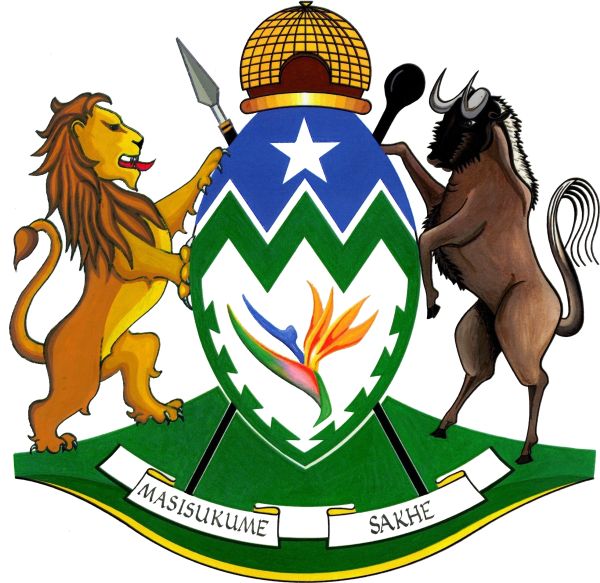KwaZulu-Natal: Difference between revisions
Knorrepoes (talk | contribs) No edit summary |
Knorrepoes (talk | contribs) No edit summary |
||
| Line 28: | Line 28: | ||
[[Category:South African Provinces and States]] | [[Category:South African Provinces and States]] | ||
[[Category:Granted 2004]] | [[Category:Granted 2004]] | ||
[[Category:KwaZulu-Natal]] | |||
Revision as of 17:31, 22 May 2012
| Heraldry of the World Civic heraldry of South Africa |
KWAZULU-NATAL
Official blazon
Origin/meaning
The arms were officially granted in 2004.
It took about 10 years before the local parliament finally agreed on new arms for the province.
The zig-zag division of the shield refers to the Drakensberg mountains, which are green in summer and snow-capped in winter. The white star refers to the birth of Christ and thereby to Natal (which means birth), the name given to the region in 1479 by Vasco da Gama.
The strelitzia flower has been the symbol for the province for a long time and represents the beauty of the province.
The shield is covered by a traditional Zulu beehive-style hut, still use din rural areas. The assegai and knobkerrie are traditional symbols of authority and are placed behind the shield. The shield itself is the traditional Zulu shield, also seen in the arms of the former homeland KwaZulu.
The lion is the traditional Africal symbol for kings and rulers. The wildebeest is taken from the old arms of Natal.
The motto Masisukume Sakhe means 'Let us rise and built'. During the adoption process one of the parties in parliament rejected the motto 'as nothing was built in 10 years', and proposed Amandla Awethu (Power is ours), but the motto was not changed.
Literature : Image send to me as a scan from a newspaper clipping.

